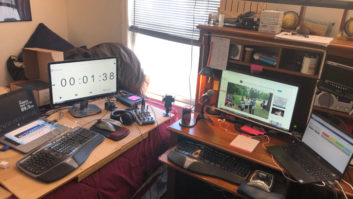In case after case before the FCC, companies argue that there shouldn’t be enforcement action against them, or that any enforcement action should be less stringent, because they fixed the problem as soon as the FCC told them about it. In case after case, they lose this argument. The FCC’s view is that compliance is required before the agency finds out about a violation, not after.
So what’s the best way for a broadcaster to ensure compliance in advance, or at least maximize the likelihood of compliance?
Simply giving employees a list of rules and telling them to make sure to follow them often will not do the trick. Rather, in areas of key importance and active FCC enforcement, it will often be helpful for broadcasters to create a formal compliance plan, and then to follow it carefully.
A strong and well-implemented compliance plan increases the likelihood of compliance. In addition, if a glitch in implementation occurs, the existence of such a compliance plan should help discourage or mitigate any FCC enforcement action.
Effective compliance begins with setting a strong tone that compliance “matters” to the company, that the company takes its regulatory obligations seriously. Such an ethic of compliance can then be implemented through the details of any specific compliance plan.
A compliance plan need not be elaborate. What it should cover in any particular instance will vary depending on the nature of the substantive area as well as the size and internal dynamics of the company. An effective compliance plan should focus on topics such as the following:
- Locus of Responsibility. A single person should hold ultimate responsibility for compliance in each area covered by the compliance plan, but the same person doesn’t need to be responsible for every area. For example, an engineer could be responsible for Emergency Alert System compliance while a program director could be responsible for payola/sponsorship identification compliance. In any event, the person should be senior enough to be empowered to take the necessary steps to make sure the compliance plan is followed carefully. For example, one recent FCC consent decree established a radio broadcaster’s general counsel as responsible for public file rule compliance, while another recent consent decree designated a television station’s news director as the responsible for compliance with the commission’s emergency captioning rules. Whoever is chosen, that person should, of course, have expertise in the relevant area of the rules.
- Overview of FCC Requirements and Station Policies. A compliance plan should include a “plain language” summary of the relevant FCC requirements and station policies implementing them. This will provide relevant employees with a handy reference source of what they must do (or not do).
- Compliance Procedures. These procedures are really the guts of any compliance plan. They should do more than just summarize the rules and tell people to follow them. Rather, the procedures should lay out in a practical way who is supposed to do what, how they should do it, and when. In a Part 17 tower compliance plan, for example, procedures should be established to cover such areas as ensuring that proper registration, signage and tower lighting are accomplished at the appropriate time before or during tower construction; ensuring that towers for any stations that are being acquired are in compliance or, if not, are made compliant promptly; making sure that lights and alarms are working and monitored correctly; notifying the FAA when tower lights go out and fixing the problem; checking towers to see if they need to be repainted. Having formal procedures to be used in key areas will go a long way to achieving compliance objectives.
- Record-Keeping. In addition to keeping records required by the rules (for example, issues-programs lists), it may be helpful to keep internal records to track compliance and, if questioned by the FCC, to demonstrate compliance. For example, if the program director is responsible for public file compliance, the station may want to require that he or she keep a log or certification of compliance.
- Training and Re-Training. A compliance plan can only work if the people who implement it know what they’re doing. Relevant employees should be trained (and periodically re-trained) on applicable FCC requirements and the company’s compliance procedures. Given employee turnover in the broadcast industry, the lack of training for new employees is one of the most significant causes of non-compliance. Thus, for example, new managers charged with hiring responsibility should be trained on the commission’s EEO outreach and record-keeping requirements.
- Oversight. A few proactive steps can help ensure that a compliance plan is working and is up to date. For example, a company could consider periodic compliance reviews or audits of whether the plan is being followed. It can also facilitate complaints or suggestions from within the company. When problems arise or are identified, a company should take appropriate steps to minimize the risk of similar problems arising in the future, for example, remedial training for the employees involved. A process should be established for periodically re-evaluating and revising the compliance plan based on problems that arise, changes in the rules, or simply new and improved thinking by people within the company about how best to achieve compliance.
The world’s greatest compliance plan will not be worth the paper it is written on if it is not actively and effectively implemented by management, consistent with the kind of overall ethic of compliance discussed above. A compliance plan is not itself an end but rather is a potentially important means for broadcasters to achieve more important ends: compliance and avoidance of FCC enforcement.








